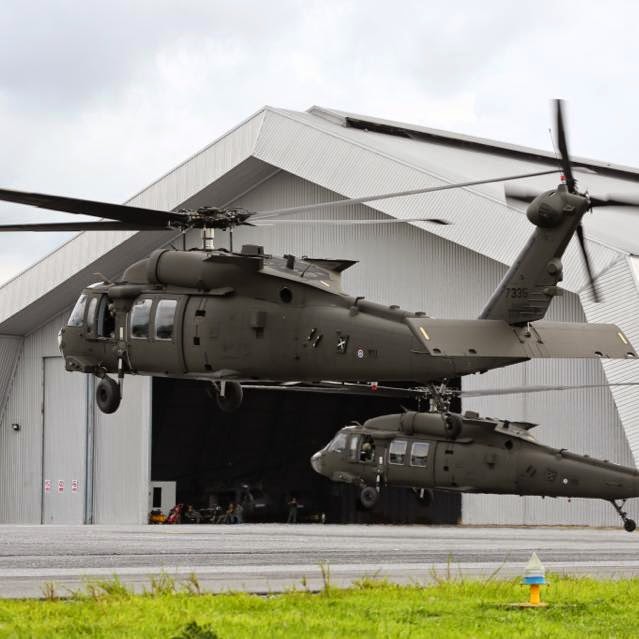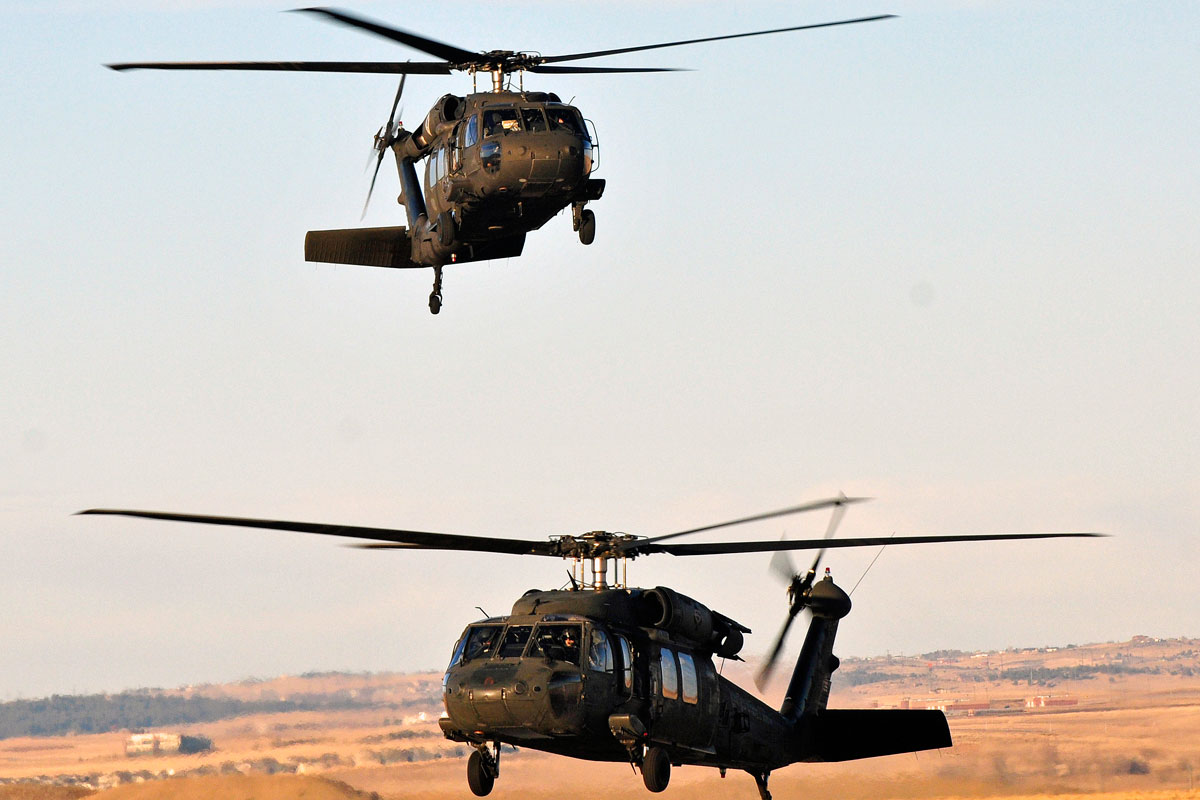Safety First: Critical Steps in UH 60 Helicopter Maintenance
Safety First: Critical Steps in UH 60 Helicopter Maintenance
Blog Article
Understanding the Mechanics and Design Behind Uh 60 Helicopters
The UH-60 helicopter, typically known as the Black Hawk, stands as a peak of contemporary rotorcraft modern technology, personifying a blend of durable design and intricate auto mechanics. As we peel off back the layers of the UH-60's design, a globe of complex systems and meticulous design comes to light.
Background of UH-60 Helicopters
The history of UH-60 helicopters traces back to the late 1970s when the USA Military sought a advanced and functional energy helicopter to replace its aging fleet. In response to this requirement, the Sikorsky Airplane Firm created the UH-60 Black Hawk helicopter. Presented in 1979, the UH-60 quickly became a staple in army operations because of its excellent capabilities.
The UH-60 was made to succeed in a variety of missions, consisting of army transport, medical evacuation, electronic war, and special procedures. Its capability to adjust to various functions made it a beneficial asset to the united state Army and various other army forces around the globe
Over the years, the UH-60 system has actually undertaken a number of upgrades and variants to enhance its efficiency and equal evolving objective demands. These helicopters have actually seen extensive service in disputes such as the Gulf Battle, Afghanistan, and Iraq, showcasing their dependability and flexibility in varied functional settings. The UH-60's rich history is a testament to its enduring tradition as a top utility helicopter.

Engine and Power Equipments
Using sophisticated propulsion innovation, UH-60 helicopters are equipped with sophisticated engine and power systems to make certain optimum performance and integrity in a variety of operational circumstances. The UH-60, commonly known as the Black Hawk, is powered by 2 General Electric T700-GE-701D engines, each efficient in supplying up to 1,940 shaft horse power. These turboshaft engines give the required thrust for the helicopter to perform its objectives properly, including troop transport, clinical discharge, and combat assistance.

Rotor System and Aerodynamics
Just how do the rotor system and the rules of aerodynamics of UH-60 helicopters contribute to their functional performance and flight capacities? The rotor system of the UH-60 helicopter plays an important duty in providing lift and propulsion.
Aerodynamics additionally play an essential function in the efficiency of UH-60 helicopters. The streamlined body and blades blade style lower drag, permitting the helicopter to accomplish higher speeds and much better gas effectiveness. The aerodynamic layout of the UH-60 additionally adds to its capacity to operate in varied address environmental problems, consisting of high elevations and warm temperatures.
Avionics and Trip Control Systems

In its detailed control with the blades system and the rules of aerodynamics of UH-60 helicopters, the avionics and trip control systems develop a crucial network of technologies shaping the aircraft's operational capacities. Avionics include the digital systems used for interaction, navigation, and keeping track of numerous airplane features. In the UH-60, these systems consist of electronic displays, interaction radios, GPS navigation, weather radar, and autopilot systems. These avionics systems give vital details to the pilots, boosting situational recognition and making sure reliable and risk-free operation of the helicopter.
The flight control systems of the UH-60 are in charge of converting the pilot's inputs into the suitable changes to the blades system, ensuring steady flight and ability to move. These systems contain hydraulic actuators, servos, and computer systems that collaborate to manage the primary and tail blades, in their website addition to various other trip control surfaces. By specifically handling the helicopter's flight dynamics, these systems allow pilots to execute a vast range of missions, from transport and search-and-rescue to combat procedures, with accuracy and self-confidence.
Role and Applications in Aviation
The role and applications of avionics and trip control systems in aeronautics are integral to ensuring the reliable and safe operation of aircraft, including UH-60 helicopters. Avionics systems in UH-60 helicopters encompass a series of electronic systems that aid in navigating, communication, tracking, and controlling numerous airplane functions. These systems consist of digital displays, auto-pilot systems, interaction radios, GPS navigation devices, and climate radar. Trip control systems play an essential role in navigating the helicopter airborne, maintaining security, and ensuring exact activities. The fly-by-wire technology made use of in modern UH-60 helicopters translates pilot inputs right into electronic signals, which are after that analyzed by the flight control computers to readjust the airplane's control surface areas. In addition, these systems incorporate safety features such as auto-pilot modes, surface awareness cautioning systems, and security augmentation systems to boost the next total safety and operational capabilities of the UH-60 helicopters in numerous objectives, consisting of army transportation, clinical emptying, search and rescue, and airborne firefighting.
Conclusion
Finally, the UH-60 helicopter is a flexible airplane with an abundant background and progressed design. Its engine and power systems, blades system, aerodynamics, avionics, and flight control systems all work with each other to make it a dependable and reliable equipment. The UH-60's role and applications in aeronautics are large, varying from army procedures to look and rescue goals. Its proceeded advancement and use show its significance in the field of air travel (uh 60).
In its detailed sychronisation with the blades system and the rules of aerodynamics of UH-60 helicopters, the avionics and trip control systems create a vital network of technologies shaping the aircraft's operational abilities.The trip control systems of the UH-60 are liable for converting the pilot's inputs into the proper modifications to the blades system, ensuring stable trip and ability to move. Avionics systems in UH-60 helicopters include an array of electronic systems that help in navigating, communication, surveillance, and controlling different airplane functions. Additionally, these systems integrate safety attributes such as autopilot modes, surface awareness advising systems, and stability augmentation systems to boost the overall security and operational abilities of the UH-60 helicopters in various objectives, including army transportation, medical evacuation, search and rescue, and aerial firefighting.
Its engine and power systems, rotor system, aerodynamics, avionics, and trip control systems all function with each other to make it a reliable and efficient device.
Report this page